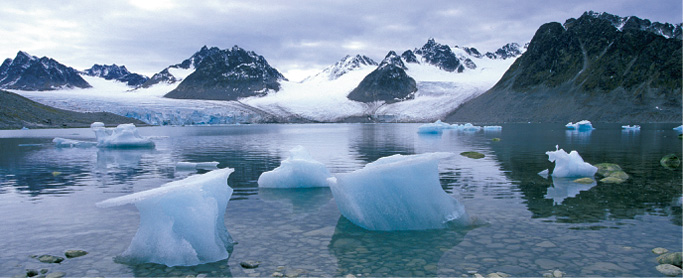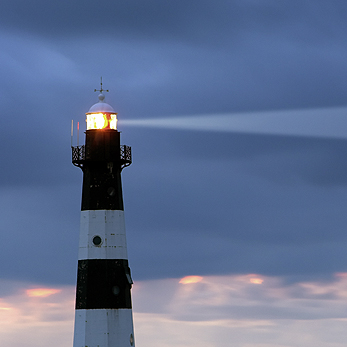Region I – Arctic Waters

Compared to other Regions, Region I is relatively unpolluted. Few people live in its catchments and parts of the Region are permanently ice-bound. The most intense pressures are at or near the coast of continental northern Europe. The Arctic hosts unique and specialised species, such as the polar bear and the narwhal, and the southern part of the Region has some of the world’s most important fisheries, including those for cod, herring and capelin.
Despite its remoteness, Region I is far from isolated from the other OSPAR Regions. Region I is both a sink for contaminants carried in from other areas, which accumulate in fish and marine mammals, and a source of water for wide-ranging ocean currents.
A significant proportion of the world’s known oil and gas reserves are in the Arctic, and large new extraction projects are already underway in the east, such as at the Shtokman field in the Russian Barents Sea.
The QSR 2000 concluded that the general status of Region I was good. Issues of high importance were: impacts of fishing; persistent organic pollutants in fish and marine mammals; fish farming; and lack of knowledge on the biological and chemical effects of climate change. Since the QSR 2000, some fish stocks have improved and fish farming is generally well managed.
| Eutrophication problem area extent | 0% |
| Monitored sites with unacceptable status | |
| – Mercury | 4% |
| – PAHs | 31% |
| Species under threat | 19 |
| Habitats under threat | 7 |
| MPA coverage | 1.5% |
Successes
Illegal cod catch down. The illegal cod catch in the Barents Sea fell by 85% between 2005 and 2008, through cooperation between countries and better control of illegal fishing vessels.
Protection of vulnerable habitats. In the past ten years, fifteen MPAs have been established in Norwegian and Icelandic waters. Most protect cold-water coral ecosystems. Two isolated hydrothermal vents off the coast of Iceland and extensive coastal areas around the Norwegian Svalbard archipelago and Bear Island (Bjørnøya) are also protected.
Integrated management plans. The Norwegian plans for integrated management of the Barents Sea and the Norwegian Sea view the ecosystem as a whole. They are good examples of future management approaches for the OSPAR area.
Ongoing concerns
Impacts of climate change. Wildlife in Region I is especially at risk from climate change. Air temperature is rising faster in the Arctic than in the rest of the OSPAR area and satellite data show that summer sea-ice cover has dropped almost 9% per decade since 1979. Winter sea-ice cover fell 2.5% per decade over this period.
As the sea ice retreats, species that breed or hunt on the ice lose their habitat. Less ice could also mean more fishing, oil extraction, shipping and tourism.
Thawing permafrost could release locked-in nutrients like nitrogen and phosphorus to the ocean, and persistent organic pollutants may be freed from the ice as it melts.
Low temperatures, greater vulnerability. The Arctic ecosystem has low temperatures, a short growing season and highly variable weather. Its species may not be able to respond quickly to rapid change, or recover quickly from damage.
Arctic animals have high fat contents in their bodies to cope with the cold, which means they can accumulate persistent fat-soluble pollutants such as PCBs and brominated flame retardants. These are transported into the Arctic by winds from lower latitudes, and high concentrations can end up at the top of the Arctic food chain.
Ocean acidification. As CO2 levels in the atmosphere increase, the harmful effects of ocean acidification may be felt earlier in the Arctic because CO2 dissolves more quickly in cold water. As the acidity of the seawater rises, organisms with calcium carbonate shells, including cold-water corals, may have difficulty forming shells and skeletons. Recent projections suggest that this could start happening as early as 2016 in the Arctic winter, and throughout the year by 2026.
Declines in seabird populations. Populations of several seabird species have declined in Region I, especially in the Norwegian and Barents Seas. The decline has been most pronounced for species that feed in the open sea, such as the northern fulmar, black-legged kittiwake and common guillemot. The 2008 breeding seasons of these birds were some of the poorest ever recorded in the North-East Atlantic. Some species totally failed to breed. Food shortage and changes to other parts of the marine food chain may be to blame, but there is an urgent need for more research into the links between long-term health of seabird populations and environmental factors.
Increasing threat of pollution from shipping and industry. Oil and gas extraction and shipping are likely to increase in Region I in the coming years. This brings increased threats of direct pollution from oil and hazardous substances, and of pollution from atmospheric nitrogen.
An emerging activity is the carbon capture and storage industry. As part of efforts to mitigate climate change, there is strong political interest to store CO2 under the seabed. Geological formations beneath the ocean are favoured, and old oil and gas fields in the Norwegian Sea are possible sites. This could generate significant industrial activity and a need for long-term monitoring in the area.
What should be done?
- Develop more integrated management plans
Plans developed in the Barents Sea and Norwegian Sea demonstrate how OSPAR believes the Arctic ecosystem ought to be managed. The approach should be applied in other parts of Region I. - Closely monitor the situation
OSPAR must watch carefully for effects of climate change and ocean acidification on this ecosystem. It must monitor threatened species groups for evidence of decline, and continue to assess the impacts of industrial activity in the Region, especially offshore oil and gas, and shipping. - Cooperate to protect
OSPAR must cooperate even more closely with other organisations working to protect the Arctic environment, such as the Arctic Council and its working groups: Conservation of Arctic Flora and Fauna (CAFF), Protection of the Arctic Marine Environment (PAME) and the Arctic Monitoring and Assessment Programme (AMAP).

